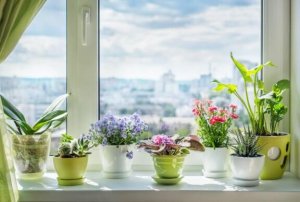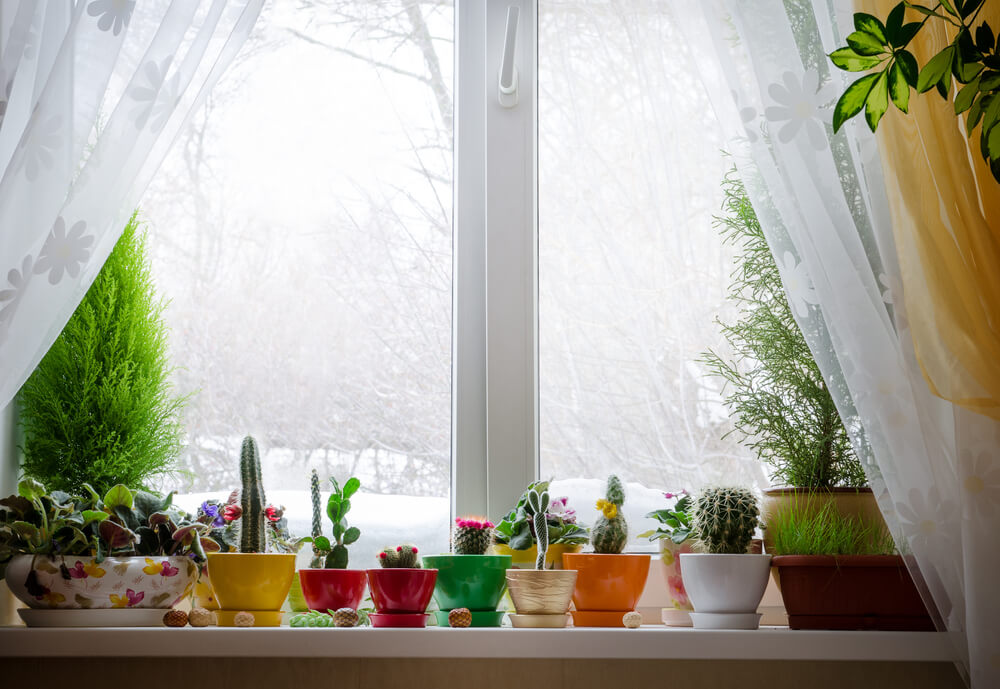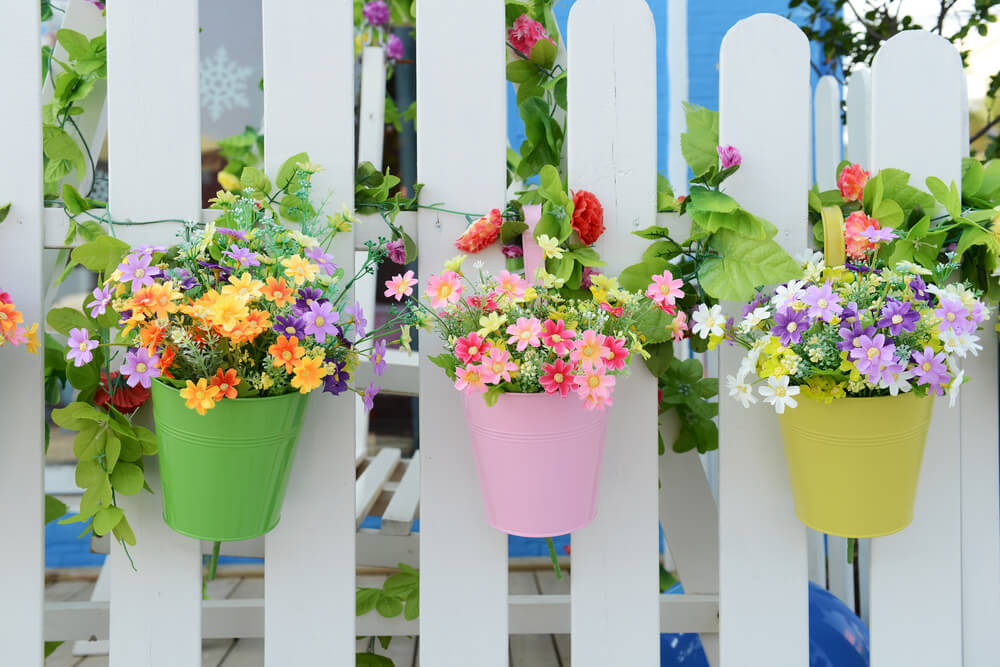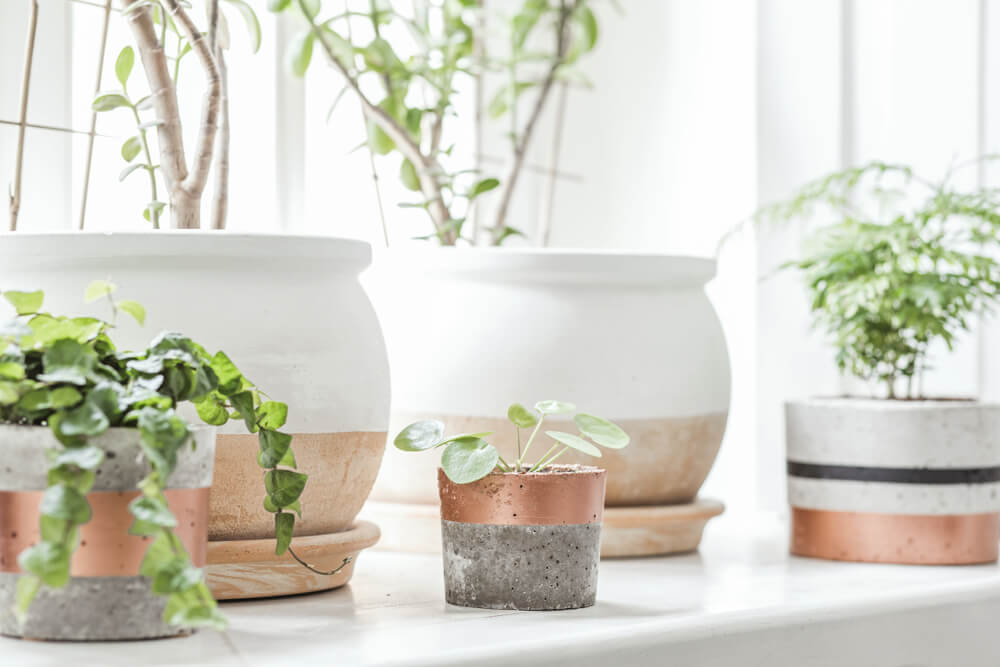Plastic vs. Ceramic Plant Pots: What's the Difference?

Plant pots are a really charming and beautiful way to decorate a home, sure to give any space a unique and original touch. Often, however, we don’t know which are the right ones to go for, or which material to buy. In this article, we’ll tell you about some of the differences between plastic and ceramic plant pots, and discuss the different advantages and disadvantages of each one.
Types of plant pot

If you’re looking to buy some plant pots, you’ve probably been checking out a few different options. Chances are, you have no idea which to choose! Each has its advantages and disadvantages.
The first thing you need to do before you choose your plant pots is to take a good look at the room you want to put them in. Is it a cold or a warm room, is it dark or bright, is it humid or dry? The answers to these questions will dictate what kind of plant pots will work best.
But what does all this have to do with plant pots, we hear you ask? The answer is simple: everything! Some materials are more suitable for an environment than others. Among the many options, you can choose from:
1. Clay (porous, dries quickly, and absorbs humidity).
2. Ceramic (beautiful, but expensive).
3. Wood (resistant to frost, but can be susceptible to rot).
4. Plastic (affordable, comes in all shapes and sizes, light-weight and easy to hang).
5. Metal (beautiful, urban and modern, but can get really hot or cold very quickly).
6. Cement or stone (minimalist, heavy, difficult to move, very robust).
7. Earthenware or terracotta (classic, versatile, porous, can be heavy and expensive).
Plastic plant pots: advantages and disadvantages

Cheap, lightweight and available in a whole range of shapes and sizes, more and more people are choosing plastic plant pots for their terraces, balconies or gardens.
Plastic plant pots are actually made of PVC, synthetic resin or polyethylene. These materials guarantee a high-quality product. You can even make them yourself, using materials you have lying around the house: large cans, bottles or other containers you no longer use. Because they are so light, they are easy to hang on balcony railings and walls.
In some specialized stores, you can also find some plastic plant pots which are painted to make them look like other materials, such as stone or clay. You can also find some double layer plant pots which offer plants better protection from extremes of temperature.
One of the main characteristics of plastic plant pots is that plastic isn’t affected by changes in weather conditions. This means that they will keep their shape all year round, with very little chance of them splitting or breaking.
Plus, because plastic is a naturally porous material, it will help keep the soil damper for longer during the summer months. This is great for your plants, especially if they are outside or in direct sunlight. Plastic plant pots need to have holes in the base to facilitate drainage.
Ceramic plant pots

Ceramic plant pots are really beautiful – you’ve probably seen them in decorating stores or on cafe tables. They can be heavy and fragile and will break if they fall on the floor, so we wouldn’t recommend hanging them or placing them up high.
The best thing about ceramic plant pots is that (besides the obvious aesthetic advantages) they will prevent any ambient humidity from reaching the roots. This makes them great if you live in a cold or damp climate.
It’s important to remember that these plant pots often don’t have drainage holes, so you can’t water your plants too often. That way your roots shouldn’t rot. Some people choose to leave their plants in the original plastic pots they came in, and then put them inside a ceramic pot. This makes it easier for the water to drain.
Another thing you need to keep in mind when it comes to ceramic plant pots is the price. They’re usually more expensive than other materials, especially in comparison to plastic.
There are several important differences between plastic and ceramic plant pots, in particular when it comes to price, decorative style, and weight.
Both can look really beautiful in the right environment. If you’re looking for a more modern option, you should go for plastic, but if you’re a fan of all things vintage, ceramic is the perfect option for you.
Plant pots are a really charming and beautiful way to decorate a home, sure to give any space a unique and original touch. Often, however, we don’t know which are the right ones to go for, or which material to buy. In this article, we’ll tell you about some of the differences between plastic and ceramic plant pots, and discuss the different advantages and disadvantages of each one.
Types of plant pot

If you’re looking to buy some plant pots, you’ve probably been checking out a few different options. Chances are, you have no idea which to choose! Each has its advantages and disadvantages.
The first thing you need to do before you choose your plant pots is to take a good look at the room you want to put them in. Is it a cold or a warm room, is it dark or bright, is it humid or dry? The answers to these questions will dictate what kind of plant pots will work best.
But what does all this have to do with plant pots, we hear you ask? The answer is simple: everything! Some materials are more suitable for an environment than others. Among the many options, you can choose from:
1. Clay (porous, dries quickly, and absorbs humidity).
2. Ceramic (beautiful, but expensive).
3. Wood (resistant to frost, but can be susceptible to rot).
4. Plastic (affordable, comes in all shapes and sizes, light-weight and easy to hang).
5. Metal (beautiful, urban and modern, but can get really hot or cold very quickly).
6. Cement or stone (minimalist, heavy, difficult to move, very robust).
7. Earthenware or terracotta (classic, versatile, porous, can be heavy and expensive).
Plastic plant pots: advantages and disadvantages

Cheap, lightweight and available in a whole range of shapes and sizes, more and more people are choosing plastic plant pots for their terraces, balconies or gardens.
Plastic plant pots are actually made of PVC, synthetic resin or polyethylene. These materials guarantee a high-quality product. You can even make them yourself, using materials you have lying around the house: large cans, bottles or other containers you no longer use. Because they are so light, they are easy to hang on balcony railings and walls.
In some specialized stores, you can also find some plastic plant pots which are painted to make them look like other materials, such as stone or clay. You can also find some double layer plant pots which offer plants better protection from extremes of temperature.
One of the main characteristics of plastic plant pots is that plastic isn’t affected by changes in weather conditions. This means that they will keep their shape all year round, with very little chance of them splitting or breaking.
Plus, because plastic is a naturally porous material, it will help keep the soil damper for longer during the summer months. This is great for your plants, especially if they are outside or in direct sunlight. Plastic plant pots need to have holes in the base to facilitate drainage.
Ceramic plant pots

Ceramic plant pots are really beautiful – you’ve probably seen them in decorating stores or on cafe tables. They can be heavy and fragile and will break if they fall on the floor, so we wouldn’t recommend hanging them or placing them up high.
The best thing about ceramic plant pots is that (besides the obvious aesthetic advantages) they will prevent any ambient humidity from reaching the roots. This makes them great if you live in a cold or damp climate.
It’s important to remember that these plant pots often don’t have drainage holes, so you can’t water your plants too often. That way your roots shouldn’t rot. Some people choose to leave their plants in the original plastic pots they came in, and then put them inside a ceramic pot. This makes it easier for the water to drain.
Another thing you need to keep in mind when it comes to ceramic plant pots is the price. They’re usually more expensive than other materials, especially in comparison to plastic.
There are several important differences between plastic and ceramic plant pots, in particular when it comes to price, decorative style, and weight.
Both can look really beautiful in the right environment. If you’re looking for a more modern option, you should go for plastic, but if you’re a fan of all things vintage, ceramic is the perfect option for you.







